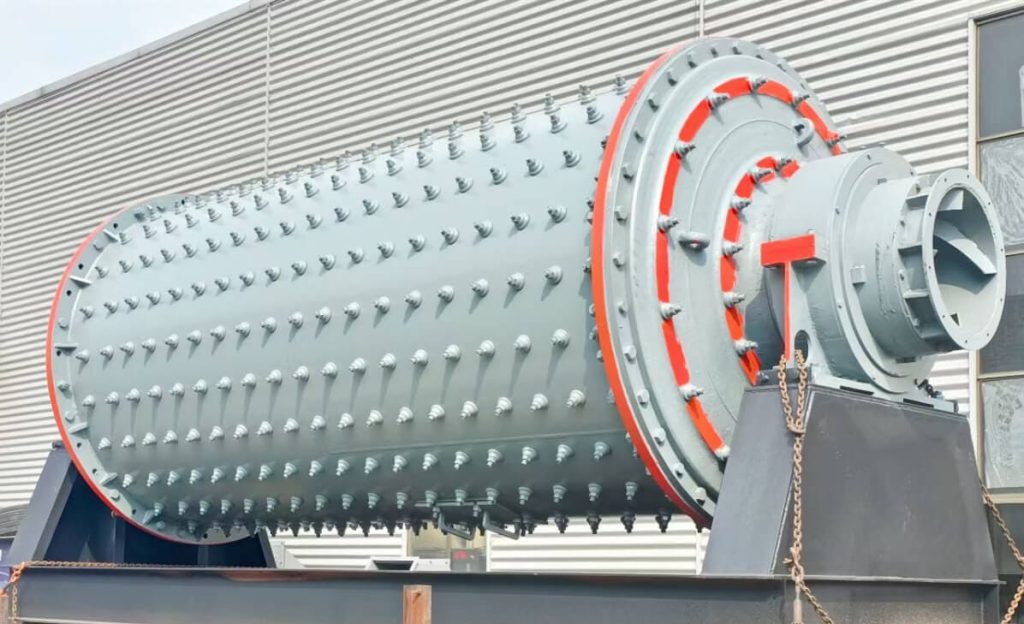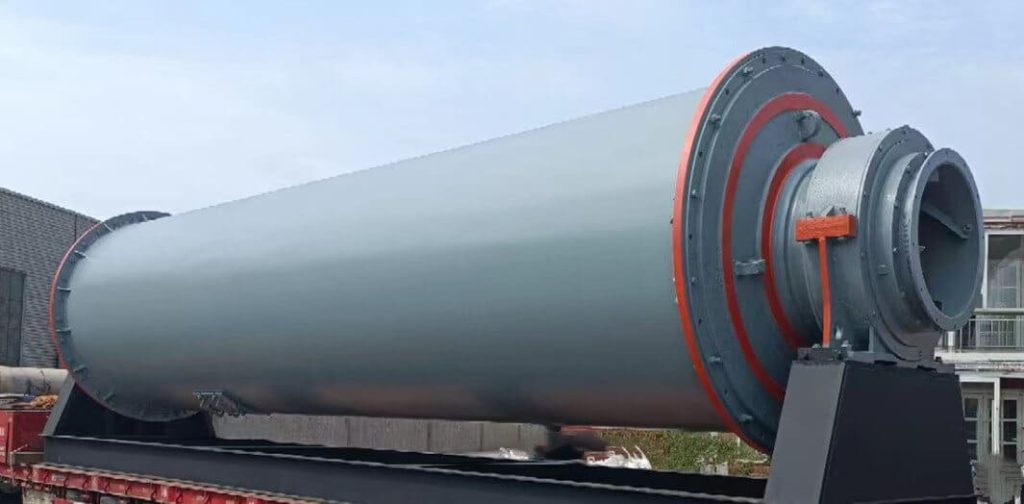Ball mill is one of the most commonly used grinding equipment in the market. This equipment has a very good grinding effect on crushed materials. There are many different types, among which energy-saving ball mills and cement ball mills are the most frequently used.
Energy-saving Ball Mill
An energy-saving ball mill is a kind of equipment specially used for grinding ore, stone, or other materials. Compared with traditional ball mills, energy-saving ball mill reduces energy consumption and improve grinding efficiency by optimizing design and using a more efficient energy transmission system. Here are some main features of the energy-saving ball mill:
Energy-saving Ball Mill Features
- High efficiency and energy saving: By improving the structural design of the ball mill and selecting high-quality materials, the energy-saving ball mill can improve working efficiency while reducing energy consumption, and the energy-saving effect can usually reach 20%-30%.
- Optimize transmission system: Adopt more advanced transmission technology, such as using a frequency converter, synchronous motor, etc., to reduce power consumption and improve the precise control of the grinding process.
- Reduce wear: An energy-saving ball mill is usually equipped with wear-resistant materials or lining plates, to reduce the wear of equipment during the grinding process and extend the service life of equipment.
- High output: Due to the optimized equipment structure, an energy-saving ball mill can process more materials under the same conditions, thereby improving production efficiency.
- Environmental protection:The improvement of energy-saving ball mills reduces energy consumption and the impact on the environment by reducing noise, vibration, and dust.
This equipment is widely used in cement, silicate products, new building materials, refractory materials, fertilizers, non-ferrous metal beneficiation, glass and ceramics, and other industries.

Cement Ball Mill
A cement ball mill is a kind of grinding equipment specially used in the cement production process, which is widely used in raw material grinding and finished cement grinding in cement plants. Its main function is to grind cement clinker and appropriate gypsum, mixed materials, etc. into fine powder for use in subsequent production.
Cement Ball Mill Working Principle
The cement ball mill uses a rotating cylinder to make the grinding media (usually steel balls) in the cylinder impact and grind with materials (such as cement clinker, gypsum, etc.). The material is crushed and gradually ground into fine powder under the impact and friction of the steel balls.
The material enters the cylinder from the feed port. Driven by the rotation of the cylinder, the material is continuously lifted and dropped and is impacted and ground multiple times between the steel balls. Finally, qualified fine powder is discharged through the discharge end.
Cement Ball Mill Structural Composition
- Cylinder: The main component of the cement ball mill, usually made of steel plate, with a liner installed inside to protect the cylinder and increase the grinding effect of the material.
- Liner: Used to protect the mill cylinder from wear and tear, and improve the grinding effect of materials during the grinding process.
- Grinding media: Usually steel balls, responsible for grinding materials.
- Transmission device: Usually composed of motors, reducers, large and small gears, etc., responsible for driving the cylinder to rotate.
- Classification device: Some cement ball mills are equipped with classification devices to ensure the uniformity of the discharge particle size.
Cement Ball Mill Type
Dry ball mill: suitable for grinding dry materials, and the ground materials are discharged through airflow.
Wet ball mill: suitable for grinding wet materials, and the ground materials are discharged in the form of slurry.
Cement Ball Mill Features
- Efficient grinding: Cement ball mills can effectively grind cement clinker and other raw materials into uniform fine powder to improve the quality of cement products.
- Strong adaptability: It can be used for grinding a variety of materials and has a wide range of applicability.
- Stable operation: Simple structure, convenient operation, stable operation, and easy maintenance.
- Large production capacity: Cement ball mills are usually designed as large-scale equipment, suitable for large-scale industrial production.
Application areas: The cement ball mill is mainly used for grinding in cement production lines, and can also be used for other ores or materials that need to be ground, such as limestone, coal powder, slag,

Energy-saving Ball Mills VS Cement Ball Mills
Energy-saving ball mills and cement ball mills are both commonly used grinding equipment in the industrial field, but they differ in design purpose, application field, and technical characteristics.
1. Design
Energy-saving ball mill: designed to reduce energy consumption and improve grinding efficiency. Energy-saving ball mills can be used for grinding a variety of materials, including ores, chemical raw materials, building materials, etc. Its core goal is to reduce power consumption and improve production efficiency through optimized design and technological innovation.
Cement ball mill: specially used for the grinding process in the cement production process, mainly used to grind cement clinker, gypsum, and other materials into fine powder for the final production of cement. Its design focuses on improving the efficiency of cement grinding and the fineness of the product.
2. Application
Energy-saving ball mill: suitable for a wide range of industrial fields, including ore processing, building materials production, chemical industry, etc. It can handle a variety of different materials, so the application field is wider.
Cement ball mill: mainly used in the grinding link in the cement production line, specializing in handling cement clinker, gypsum, and other materials related to cement production.
3. Technical features
Energy-saving ball mill:
- Low energy consumption: Energy consumption is significantly reduced by optimizing the transmission system, improving the lining design, and using new materials.
- High efficiency: The design focuses on improving grinding efficiency, reducing ineffective wear and energy waste.
- Multi-purpose: It can adapt to different materials and process requirements and has higher adaptability.
Cement ball mill:
- Strong specialization: It is optimized for the grinding of cement clinker and other materials to meet the special requirements of cement production.
- High stability: The design is mature, the operation is simple and reliable, and it can operate stably for a long time, which is suitable for large-scale cement production.
- Product quality control:The particle size and uniformity of the output can be better controlled during the grinding process to meet the requirements of cement quality.
4. Equipment structure
Energy-saving ball mill: It is usually equipped with a more optimized transmission device and lining design, and may also integrate some advanced control systems to improve energy utilization.
Cement ball mill: The design focuses more on durability and continuous operation capability, and is equipped with a structure and lining specifically for the cement grinding process.
5. Economic Benefits
Energy-saving ball mill: Due to its low energy consumption, it can save a lot of energy costs in long-term operation and is suitable for enterprises that need to reduce production costs in the long term.
Cement ball mill: It plays an irreplaceable role in cement production, can ensure the quality and output of cement products, and has significant economic benefits for cement production enterprises.
6. Environmental performance
Energy-saving ball mill: By reducing energy consumption and emissions, it helps to reduce the carbon footprint and environmental impact of the production process.
Cement ball mill: Modern cement ball mills are usually equipped with some environmental protection devices, such as dust removal equipment, to reduce dust pollution during the production process.
Energy-saving ball mills are more suitable for the grinding needs of various materials, especially in occasions with strict requirements on energy consumption.
Cement ball mills are key equipment for cement production, specially designed for cement grinding process optimization. Which equipment to choose depends on the specific production needs and process requirements.
